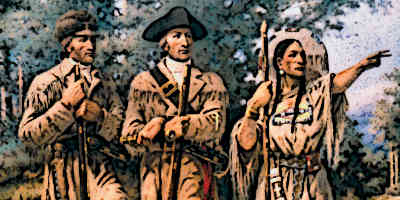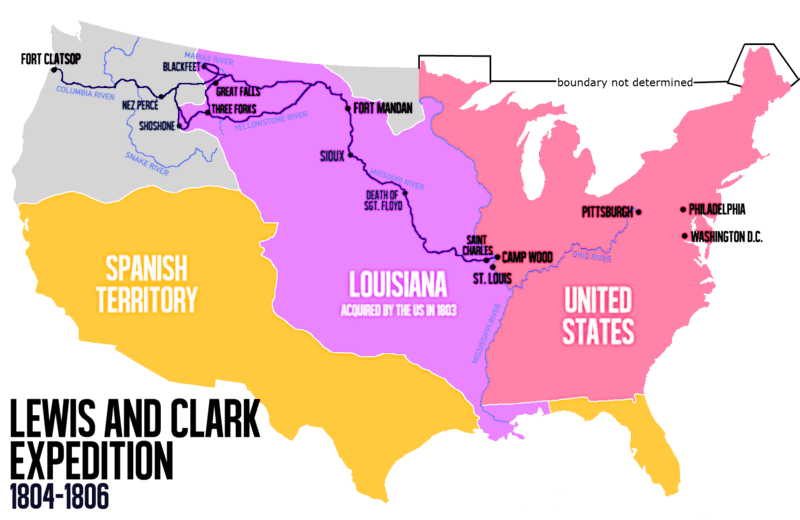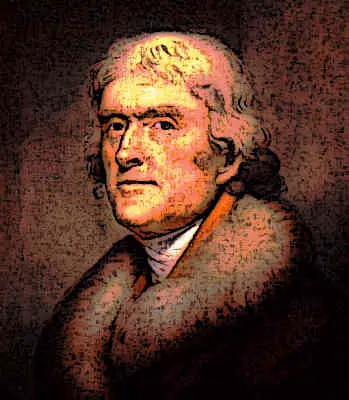Lewis and Clark
Introduction
Lewis and Clark were two noted American explorers who pioneered the exploration of the American West.
Meriwether Lewis was born on August 18th, 1774 in Virginia. After his father’s death, he moved to Georgiana. In 1793, Lewis graduated from college. He then joined the State militia.
Soon after the American Independence, he fought against the Whiskey Rebellion. At the age of 27, he became Thomas Jefferson’s secretary.
William Clark hailed from the state of Virginia. He was 15 years old when his family moved to Kentucky. At the age of 19, Clark joined the local militia. He later joined the official army. It was here Clark met Lewis. In 1796 he returned home, and seven years later Lewis selected him for the Louisiana expedition.

The Lewis and Clark Expedition
The Lewis and Clark expedition started on May 1804 and ended on September 1806. This was the USA’s first attempt to explore the unchartered western area.
The expedition group mainly comprised of US Army Volunteers. Captain Meriwether Lewis and William Clark were appointed as the commanders.

Lewis and Clark Expedition Map
As soon as Louisiana’s purchase had been finalized, Thomas Jefferson launched the process for the expedition.
The primary objectives of this excursion were to create a map of the unknown territory, discover a route to the western coast and establish American authority. The expedition was also asked to collect data regarding the natural environment, plants, and animals in the West.
The final objective of the expedition was to develop good trading relationships with the natives.

Thomas Jefferson Founding Father 3rd President of America Portrait Painting
Departure for the Expedition
The Lewis and Clark Expedition started its journey on May 14th, 1804. The expedition packed food, rifles, warm clothing, glass beads and trinkets. The journey started at the Missouri River.
Two small boats and one large boat were used for navigating the river. They had to tackle a lot of problems such as temperature, insects and strong currents.
Long poles and ropes had to be used to keep the boat stable. On 20th August 1804, Sergeant Charles Floyd died due to abdominal infection. He was the only member of the team who perished during the expedition.
Meeting with Sacagawea
During their stay at the Fort Mandan, Lewis and Clark met Toussaint Charbonneau and his wife, Sacagawea. Both of them agreed to join the expedition.
Sacagawea was a Native Indian woman who became an invaluable asset for the group. She taught them about edible plants, helped ease tensions, negotiated with the Indian chiefs and helped establish diplomatic relationships.
Accomplishments and Discoveries
Lewis and Clark fulfilled the mission of the expedition. They successfully explored the Louisiana territory and established trade relationships with the native tribes. The Corps also succeeded in creating an American presence in the area.
They gained valuable data regarding flora, fauna, natural environment and other resources. The expedition successfully mapped the territory, the mountain ranges, rivers and the tribes in the region.
It also learned parts of the Native Indians languages and brought back various Indian artifacts.
Significance of the Expedition
As a result of this expedition, United States discovered different channels and forged new diplomatic relationships. The animals and plant discoveries received a lot of attention, especially from the American Philosophical Society.
President Jefferson even grew Indian corn and declared it an excellent food source. This expedition paved a path for future discoveries, trade and explorations of the western territories.